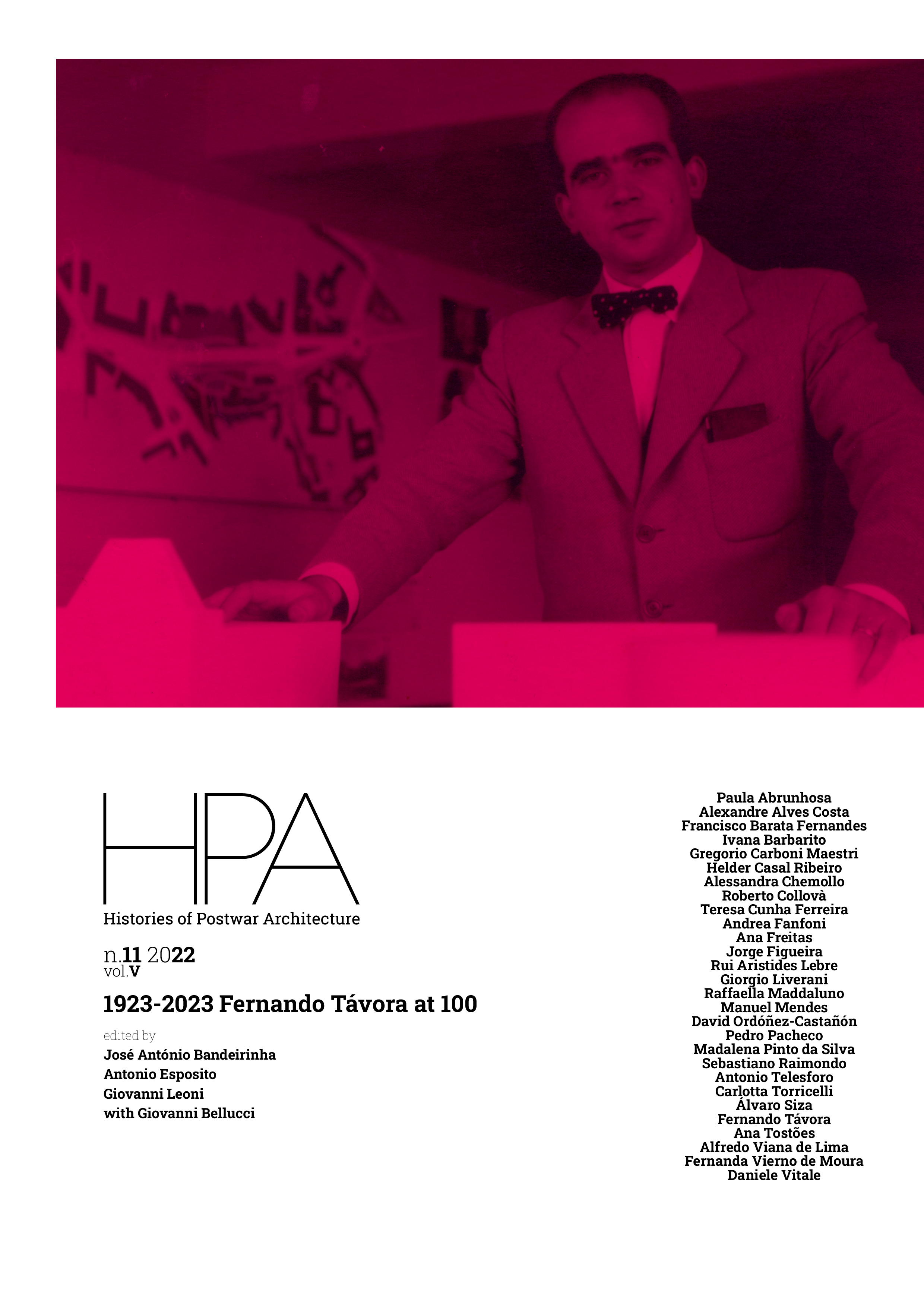The Search for Eternity and the Polyphony Prodigy in Távora
DOI:
https://doi.org/10.6092/issn.2611-0075/19826Keywords:
Fernando Távora, Portuguese Architecture, Journey to the East, Modernity, TraditionAbstract
Fernando Távora was a pioneer. As he never tired of saying wisely and kindly, “I am Portuguese architecture!” He not only integrated various references in Portuguese architecture but also deeply understood architecture as culture in a profoundly innovative way.
The intense immersion in modernity without abandoning tradition, the desire to innovate while simultaneously not forgetting the roots, are at the core of the rich and complex personality of the architect Fernando Távora, which is reflected in his actions, his work, his teaching, his life.
From Le Corbusier to the modernists of Orfeu, from traditional Japanese architecture to Portuguese vernacular and erudite architecture, from classical order to Miesian rigor, Távora thinks, feels, and builds a heterodox and inclusive path, a genuine journey in search of truth to “arrive at solutions of eternity”.
As he wrote in 1960, “I am increasingly convinced that only by doing the same thing over and over again, in one lifetime or over generations, is it possible to refine and arrive at everlasting solutions. From the Theséion to the Parthenon there is a whole path of progress, as with Mies’ Lake Shore 1st and 2nd phases”.
In Japan, Távora rediscovers the weight of history and the call to “arrive at solutions of eternity.” The investigation into the Portuguese house (1945-1947), the field surveys conducted within the framework of the “Survey of Portuguese Regional Architecture,” and the study of vernacular and erudite architecture find resonance in Japan.
Downloads
References
Arquitectura Popular em Portugal. Lisboa: Associação dos Arquitectos Portugueses, 1961.
d’Ors. Eugénio. “Primeros lemas”, Gnómica, no. XVII (1941).
”Entrevista com Fernando Távora”, Arquitectura, no. 123 (1971), 150.
Kubler, George. The Shape of Time: Remarks on the History of Things. New Haven: Yale University Press, 1962.
Mesquita, Ana. “O melhor de dois mundos: a viagem do arquitecto Távora aos EUA e Japão – Diário 1960”, Master’s Thesis, Faculdade de Ciências e Tecnologias da Universidade Coimbra, 2007.
Siza, Álvaro. “Fernando Távora”. In Desenho de Arquitectura: Património da Escola de Belas Artes do Porto e da Faculdade de Arquitectura da Universidade do Porto (Porto: Universidade do Porto, 1987).
Rossi, Aldo. Autobiographie Scientifique. Marseille: Ed. Parenthèses, 1988, 12.
Taut, Bruno. Houses and People of Japan. Tokyo: Sanseido, 1937.
Távora, Fernando. “Immigration/Emigração. Cultura Arquitectónica Portuguesa no Mundo”. In Ana Tostões, Wilfried Wang, Annette Becker, Portugal: Arquitectura do Século XX (München/New York/Frankfurt/Lisbon: Prestel/DAM/PF 97, 1998).
Távora, Fernando. “Escola do Cedro”. Arquitectura, no. 85 (1964), 175-179.
Távora, Fernando. Diário de “bordo”, 1960 (Guimarães: Associação Casa da Arquitetura/Fundação Marques da Silva, Família Távora, Fundação Cidade de Guimarães, ed. fac-símile, 2012).
Távora, Fernando. “O Problema da Casa Portuguesa”, Cadernos de Arquitectura, no. 1 (1947), 12.
Downloads
Published
How to Cite
Issue
Section
License
Copyright (c) 2022 Ana Tostões

This work is licensed under a Creative Commons Attribution 4.0 International License.





